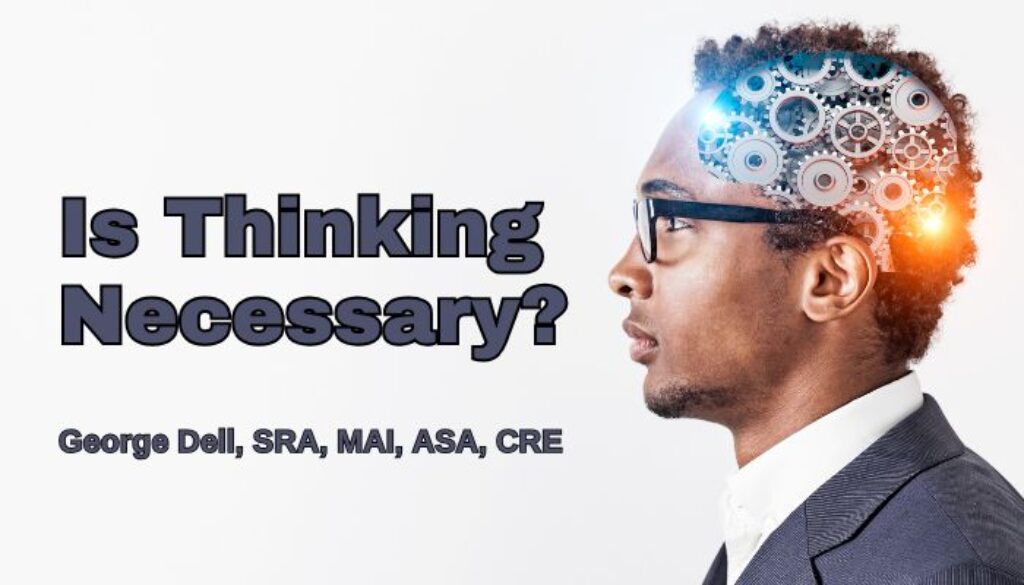Appraisers are taught that there are three “approaches” to value. Follow the path, and you are safe.
Standards, regulations, users, and peers all expect the “process” to be followed. Follow it, and you are safe.
Appraisers are also harangued to be ethical and unbiased. Just be “impartial, independent, and objective.” No problem.
Problem. Appraisers are not taught how to be ethical and objective. It is simply nowhere to be found in traditional classes nor from our practical ‘experience.’
Beyond this blog: 1) it is possible to learn to be ethical, therefore it is possible to teach ethical behavior; 2) It is possible to learn how to be analytically objective, as well as psychologically objective. But established curriculum does neither.
No wonder appraisers are accused of bias. No wonder the ‘profession’ continues to lose market share. No wonder Appraisal is not fun anymore.
In the Valuemetrics.info curriculum, we have long included arguments for the need for critical thinking as a part of the service provided. Is this still necessary?
On the residential side, the government sponsored agencies (FannieMae and Freddie Mac) have stated that, with the new cloud-based ‘forms’, appraisers’ responsibilities are changed. This means work-scope, data standardization (UAD), and the delivery format are pre-set. But what has not changed?
Data analysis.
In fact, it’s clear that data driven methods are required to replace the “trust me” data selection, “fake it” adjustments, and gobbledy-gook reconciliation to explain why things are not very consistent.
Here we have a profession built on “worthy of belief” credibility in place reliability from facts, logic, metaphors, and graphic stories.
Analytical objectivity and unbiasedness is based on facts, logic, and understandability.
Critical thinking:
- is important. It can be learned.
- emphasizes rational, objective approach, with self-awareness!
- helps stop research bias. It enables better choice of evidence.
- it helps needed respect for alternative paths and data analysis.
- includes literacy as well as numeracy. Appraisal means quantifying things – numeracy.
Today we have “big data.” We have computer power and brain/machine connection via visualization. Critical thinking includes statistical, analytical, and even creative thinking. It can be taught by parts – such as convergent thinking, divergent thinking, and connections to objectivity and unbiasedness.
This needs to be part of appraiser education.
Appraisal is critical thinking . . .

September 25, 2024 @ 3:12 am
Thanks George,
Appraisal has taught me critical thinking.